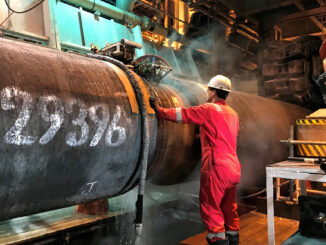
May 1, 2023
Data source: U.S. Energy Information Administration, Weekly Natural Gas Storage Report
During this past winter heating season (Nov 1-Mar 31), the amount of natural gas withdrawn from underground storage in the U.S. South Central storage region was among the least on record, at 239 billion cubic feet (Bcf), according to our Weekly Natural Gas Storage Report. Winter heating degree days in the region were 10% below the 10-year (2013-22) average, reducing the need to use natural gas inventories to meet heating demand. Regional natural gas consumption in the residential and commercial sectors was 12% below the five-winter average (from 2017-18 to 2021-22) this winter, according to data from S&P Global Commodity Insights.
Natural gas storage helps balance supply and demand in the United States, particularly during the winter months when colder weather increases demand for heating, causing natural gas consumption to increase. In addition to mild temperatures and reduced demand, relatively high natural gas production contributed to less storage withdrawals than average in the region.
The U.S. South Central storage region is home to several major natural gas-producing basins, including Haynesville, Permian, Woodford, Eagle Ford, and Barnett. In addition to greater-than-historical-average production, an extra 2 billion cubic feet per day (Bcf/d) of effective supply became available for U.S. domestic consumption when the Freeport liquefied natural gas (LNG) terminal in Texas shut down last summer.
The South Central region is the largest U.S. storage region, with 1,550 Bcf of underground storage design capacity. Salt cavern facilities make up nearly 30% of working storage capacity in the region and can be used to meet demand in sudden colder temperatures, giving the South Central storage region more flexibility than other storage regions.
The South Central storage region has the greatest maximum natural gas withdrawal deliverability (51.8 Bcf/d) of any storage region. Maximum withdrawals in the other four U.S. storage regions range from 4.3 Bcf/d to 28.2 Bcf/d, according to our survey data. As a result, colder-than-normal winter temperatures in the South Central region typically result in large net withdrawals of natural gas from storage. However, due to above-normal temperatures in the region, large net withdrawals from storage in the South Central storage region were uncommon this winter.
We maintain a Natural Gas Storage Dashboard with up-to-date national and regional data as well as commentary.
Principal contributor: James Easton
During this past winter heating season (Nov 1-Mar 31), the amount of natural gas withdrawn from underground storage in the U.S. South Central storage region was among the least on record, at 239 billion cubic feet (Bcf), according to our Weekly Natural Gas Storage Report. Winter heating degree days in the region were 10% below the 10-year (2013-22) average, reducing the need to use natural gas inventories to meet heating demand. Regional natural gas consumption in the residential and commercial sectors was 12% below the five-winter average (from 2017-18 to 2021-22) this winter, according to data from S&P Global Commodity Insights.



